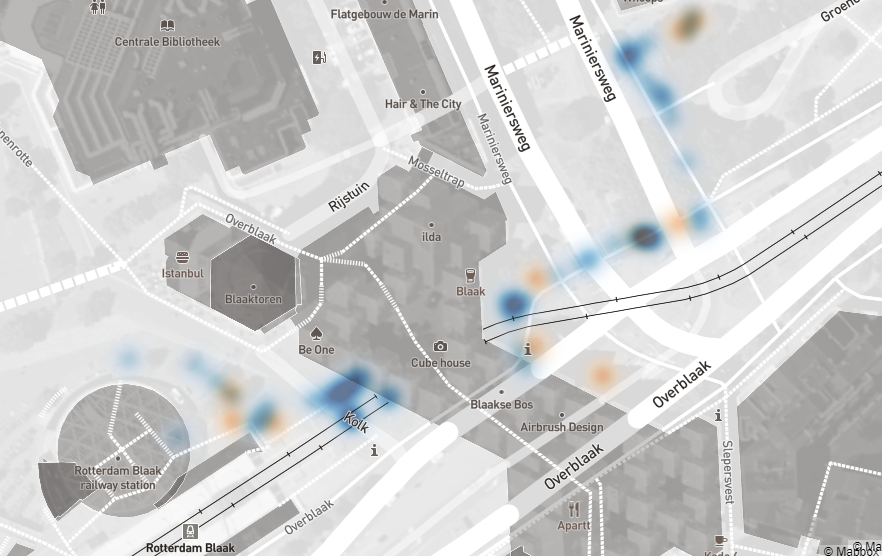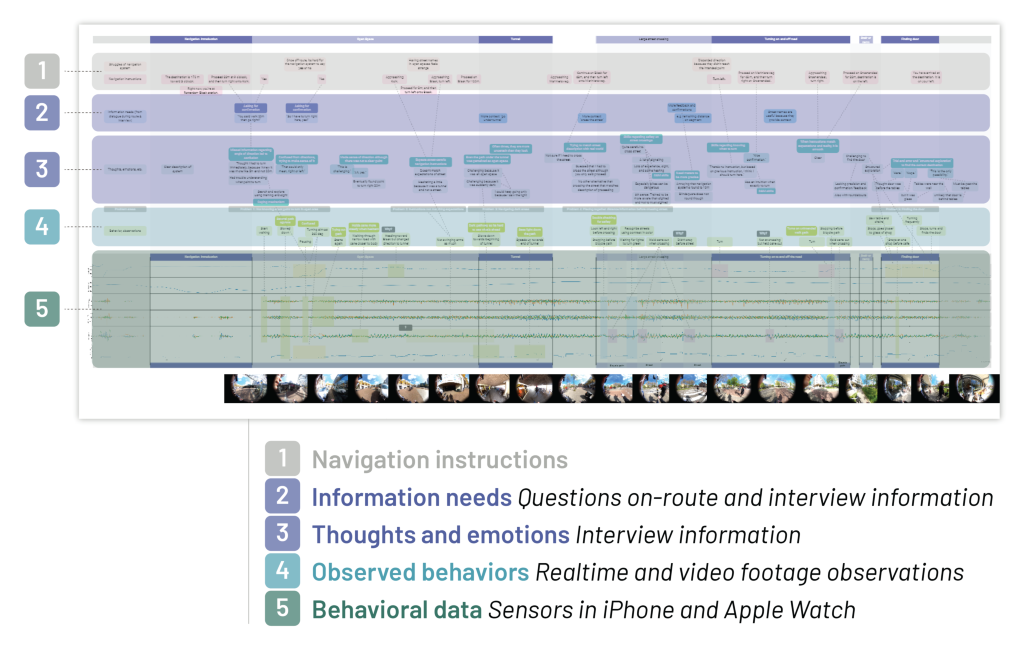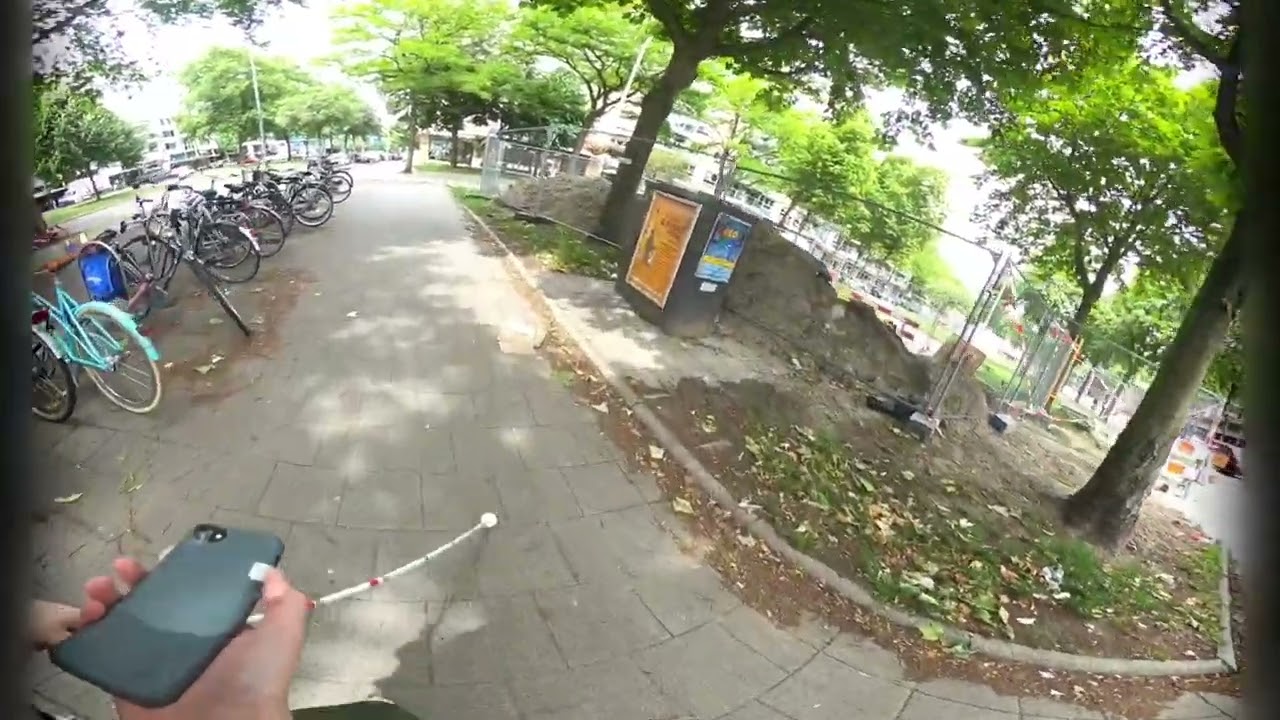Behavioural data is used in a range of applications to gain user insights. For example, mouse movement and clicks are used to analyse user engagement on a website. With advances in computing power and human-sensing technologies, behavioural data in the physical world is becoming more accessible. The question is: How can we design using behavioural data? I explored this question in the context of outdoor navigation for individuals with visual impairments. More specifically, I wanted to investigate if and in what ways pedestrian travellers can benefit from a smart navigation agent that can sense and is aware of both the environment and the user.
Sensors embedded in devices on the market allowed me to dive into the context and record behavioural timeseries data, such as body orientation and cane movements, while the users navigated an unfamiliar route. This sensor data, which captures even the slightest motions, helped identify significant moments that were then collaboratively analysed with the users.
The resulting concept allows users to request two types of navigational information through buttons. The location where information is requested form two streams of behavioural data that reflect two distinct user states: when users feel uncertain versus when they feel relatively at ease.
This kind of behavioural data; one that embeds rich information about the user needs, form the building blocks of future prototypes, which will generate more data, providing further insights. This positive feedback cycle is key to keep users in the product development loop without having to conduct intense user research.
By exploring behavioural data from five sensors worn by visually impaired participants, I defined a concept that produces two types of user-generated behavioural data. I believe this process of embedding rich insights on user experience from the thick data into thin and scalable data is the value of involving behavioural data in the early stages of the design process. Especially in this connected digital era with increasing numbers of things, machines, and agents, designers need to consider how artefacts can generate meaningful behavioural data that will drive future iterations.






